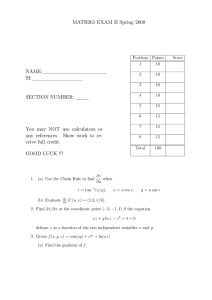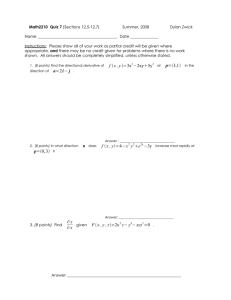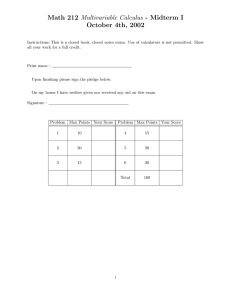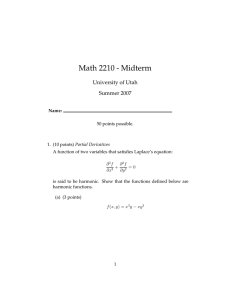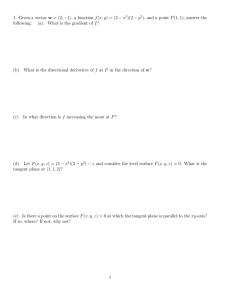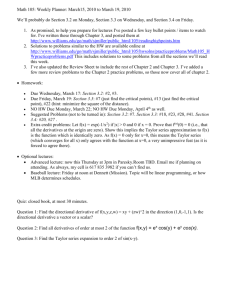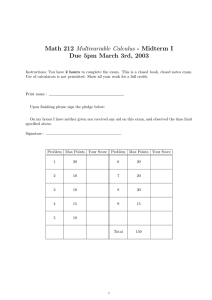Math 251. WEEK in REVIEW 4. Fall 2013 − y
advertisement
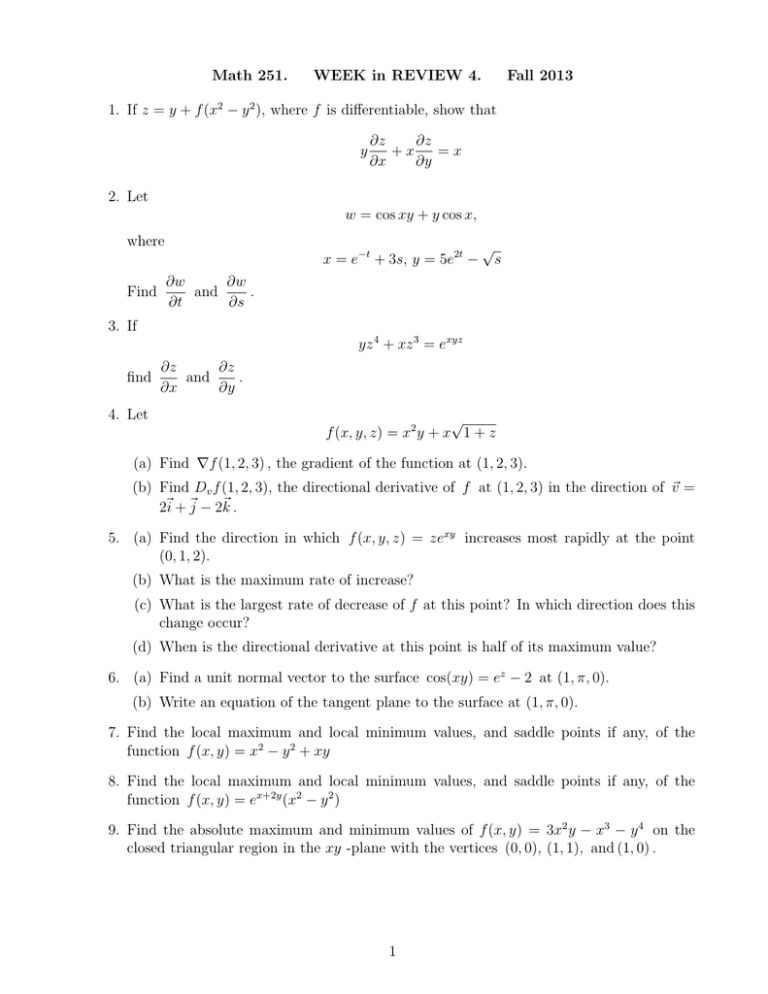
Math 251. WEEK in REVIEW 4. Fall 2013 1. If z = y + f (x2 − y 2 ), where f is differentiable, show that y ∂z ∂z +x =x ∂x ∂y 2. Let w = cos xy + y cos x, where x = e−t + 3s, y = 5e2t − Find √ s ∂w ∂w and . ∂t ∂s 3. If yz 4 + xz 3 = exyz find 4. Let ∂z ∂z and . ∂x ∂y √ f (x, y, z) = x2 y + x 1 + z (a) Find ∇f (1, 2, 3) , the gradient of the function at (1, 2, 3). (b) Find Dv f (1, 2, 3), the directional derivative of f at (1, 2, 3) in the direction of ~v = 2~i + ~j − 2~k . 5. (a) Find the direction in which f (x, y, z) = zexy increases most rapidly at the point (0, 1, 2). (b) What is the maximum rate of increase? (c) What is the largest rate of decrease of f at this point? In which direction does this change occur? (d) When is the directional derivative at this point is half of its maximum value? 6. (a) Find a unit normal vector to the surface cos(xy) = ez − 2 at (1, π, 0). (b) Write an equation of the tangent plane to the surface at (1, π, 0). 7. Find the local maximum and local minimum values, and saddle points if any, of the function f (x, y) = x2 − y 2 + xy 8. Find the local maximum and local minimum values, and saddle points if any, of the function f (x, y) = ex+2y (x2 − y 2 ) 9. Find the absolute maximum and minimum values of f (x, y) = 3x2 y − x3 − y 4 on the closed triangular region in the xy -plane with the vertices (0, 0), (1, 1), and (1, 0) . 1


